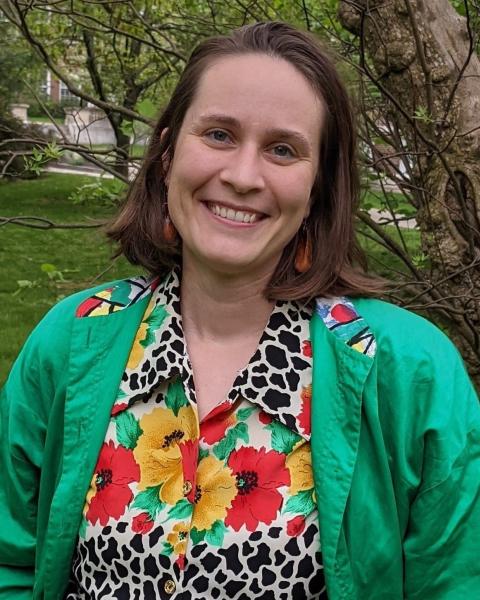This research was published in the INSPIRED: A Publication of the New Hampshire Agricultural Experiment Station (Spring 2024)
Researchers: A. O’Brien, Z. Yu, C. Pencer, M. Frederickson, G. Lefevre & E. Passeport
As urbanization and the expansion of urban areas increase, there is greater importance to managing urban ecological issues such as increased contaminants in stormwater. In the northeastern United States, heavy reliance on road salt and use of anti-corrosive compounds such as benzotriazole continues to impact freshwater lakes and threaten aquatic life because these compounds can remain in water for long periods. While reducing the use of these compounds is necessary, it is also important to understand whether bioremediation is possible to lower existing concentration levels in freshwater lakes.
Background and Key Concepts
Natural and constructed wetlands are key tools for managing urban stormwater, largely because plants and microbes will transform many organic pollutants into less dangerous products. However, constructed wetlands vary in effectiveness, suggesting that we have opportunities to improve effectiveness. One potential source of improvement could be leveraging diverse microbial communities—microbiomes—to help transform contaminants. Testing this and assessing the benefits of this approach could help inform water management strategies.
Methodology
More than 2,500 constructed microcosms—small, experimental microcosms that are meant to mimic characteristics of larger environments—were used to demonstrate how naturally occurring and manipulable biological variation could be harnessed for water bioremediation in a model plant-microbiome-contaminant system: the common freshwater plant duckweed (Lemna minor). Duckweed genotypes from 50 sites were matched either with their co-occurring microbiomes or had their microbiomes disrupted, and each of these 100 combinations was crossed with six different contaminant mixes of the winter co-contaminants benzotriazole and salt (sodium chloride) in microcosms. Further treatments also manipulated a single-celled green microalgae, Chlorella vulgaris.
Microcosms were developed in small-scale well-plates (Fig. 1). These 2,500 microcosms fit in the footprint of a single shelf in a single growth chamber. Imagery was used to evaluate duckweed growth in the microcosms, and mass spectrometry helped evaluate the concentration of 10 different known potential products of benzotriazole transformation.
Results and Impacts
In all experimental microcosms containing duckweed, there was evidence of rapid transformation of benzotriazole. The expected outcome was that high levels of salt would interfere with biotransformation of organic contaminants, but benzotriazole was rapidly transformed even in concentrations of salt at urban runoff levels.
However, not all duckweeds and microbiomes were equivalent if included in newly constructed wetlands. Duckweeds from rural sites, duckweeds with the added algae (Chlorella vulgaris), and duckweeds with diverse microbiomes could help optimize benzotriazole removal and minimize byproduct toxicity (Fig. 2).
Greater growth of duckweed correlates with increased benzotriazole transformation, potentially through mechanisms like auxin, a plant growth-promoting hormone. This suggests that duckweeds might process benzotriazole as a pseudo-auxin and thereby receive analogous growth signals.
Conversely, despite expectations, greater microbial density did not necessarily result in an increased production of transformation products. The variability in microbial metabolism within diverse microbiomes may facilitate additional, yet undetected, transformations of benzotriazole.
Without the presence of duckweed, microbial communities alone showed limited capability in transforming benzotriazole. The organic carbon provided by duckweed is likely crucial for harnessing the metabolic diversity of these microbes, emphasizing the interdependence of host plants and their microbiomes in enhancing bioremediation efforts.

This project was funded by the National Sciences and Engineering Research Council of Canada (NSERC) Discovery Grants and a University of Toronto XSeed Grant, NSERC Canada Research Chair program grants, the Gordon and Betty Moore Foundation, and the National Science Foundation’s Chemical, Bioengineering, Environmental and Transport Systems (CBET) CAREER funding program.
Key Findings
- Harnessing variation in plants and microbiomes could impact and improve bioremediation—the process in which biological systems transform organic contaminants into less toxic byproducts.
- Experimental microcosms showed that duckweeds rapidly transformed and bioremediated the organic contaminant benzotriazole—a chemical used in industrial, commercial and consumer products.
About the Co-author

Anna O'Brien, Assistant Professor of Molecular, Cellular, and Biomedical Sciences
Contact information: Anna.OBrien@unh.edu, FindScholars profile

High Park in the city of Toronto, in Ontario, Canada, with duckweeds in the foreground. Image courtesy of Anna O’Brien.

Example of duckweed, microbe, and contaminant microcosms from the experiment.

